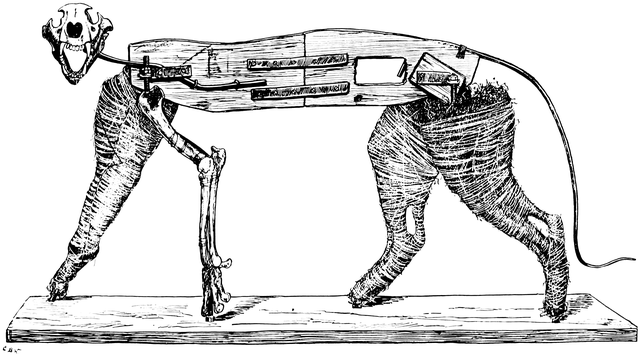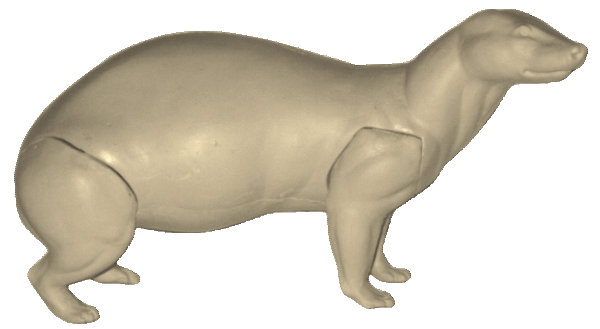What goes inside a piece of taxidermy?
- Becky Dick
- May 18, 2022
- 4 min read
Updated: May 21, 2022
Want to know what goes on inside a piece of taxidermy? I'll give you a basic quick summary below some of the common materials that are used today in modern taxidermy (as well as old taxidermy too). And of course an overview what materials I use as well.
It can vary the materials used inside taxidermy. Historical taxidermy can have different or even similar material to what some taxidermists use today.
What I use in my pieces are varies depending on what I am working on.
One of the materials I use in my work is wood wool (also called excelsior). It is a product made of wood slivers cut from logs. There's varying degrees of thickness you can buy and it's used for packaging, hampers and historically used in upholstery. A lot of Victorian taxidermists used this material back in the day and you will find a lot of older game heads even smaller mounts or birds or mammals might have a wood wool inside. It is usually bond over a wire armature and wrapped with string to keep it in place. It's also used in modern taxidermy too as it's a very affordable and a sustainable material. Some older mounts I have found to contain straw too.

I'll show you some of my wood wool armatures I have created before putting the mammal or bird skin over the top of them.
As you can see some of the forms I make for my work I used the real skull of the animal if it's intact as I personally find that provides the best fit for my work. I also prefer working in newclay over the real skull when sculpting the face and find that's the easiest to manipulate. Another method is moulding and casting the raw head to get accurate measurements, this is also a great way of getting a true likeness of the specimen you're working with. As I'm getting more and more aware of sustainability and what is more environmentally friendly. I have gone to a more traditional route and try and use the original skull in most of what I do. If it's not possible, then I mould and cast the raw head out of hard-ish foam.
I'll attach some photos below which shows some examples of Victorian wood wool bodies which shows a fascinating insight into the past. I do not claim these images to be my own and merely an educational insight into what the inside of old taxidermy pieces look like.
Other materials used that are also used in old pieces and new today is Tow fibre. It is a coarse, broken fibre, removed during processing when flax, hemp and are separated from the shives. Tow has been used for upholstery stuffing and of course taxidermy. It has many uses. What I have been shown is you can use it to thinly layer over the top of wood wool bodies to make it smoother, used for the necks of bird bodies. And as packing material around the form by chopping up smalls bits of tow. It's a very versatile and also sustainable material. It can be tricky to get hold of nowadays but I recently found that fine flax can act as a good substitute for tow fibre.
(None of the images below are mine are purely for educational use)
More modern types of taxidermy forms are very commercial and you can buy ready made hard foam bodies from taxidermy suppliers which range in a huge variety of sizes. Again none of the images apart from the bulls head form are mine and purely to demonstrate what commercial taxidermy forms can look like. You can get commercial forms from JHT supplies, Research Manakins, McKenzie's, Van Dyke's, Hauser-Foremen and many more.
Another material I like to use is balsa wood for my bird bodies. It comes from the "Balsa tree" also known as the Ochroma Tree. It is a fast growing tree native to the Americas. It's name "balsa" is the Spanish word for raft. It's classed as a hardwood despite the wood itself being very soft. It's lightweight and can be easily carved into. Below I have picked out some of my own images that show the balsa wood body. The first image is a relation to a complete piece of taxidermy to give you an idea how it is positioned inside a bird mount.
If you want to learn more about how to carve balsa for bird bodies or learn more about bird taxidermy. Carl Church's Bird Taxidermy Manual is a great resource into getting started.
And lastly one main aspect of taxidermy is of course the eyes! The eyes aren't real in any taxidermy mounts, it is either glass or acrylic eyes. This makes the mount more lifelike. There are many suppliers of taxidermy eyes. The two main suppliers I use is JHTsupplies.co.uk or Taxidermy.by. Other suppliers are EYEdentity, Watkins & Doncaster and loads more.

Of course there's many other materials that are used in taxidermy such as galvanised wire, wooden shields, bases, perches, glass domes and cases, clay, wood, ear liners, preservative paste. As well as the tools, machinery and other specialist materials that may be used in some mounts. I hope you found this insightful and may look at taxidermy in a different light!


























































































